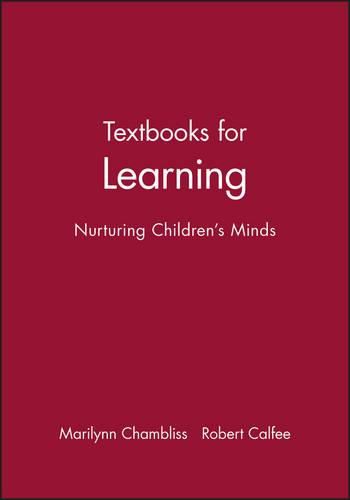Readings Newsletter
Become a Readings Member to make your shopping experience even easier.
Sign in or sign up for free!
You’re not far away from qualifying for FREE standard shipping within Australia
You’ve qualified for FREE standard shipping within Australia
The cart is loading…






This book is one of the most comprehensive texts discussing the design, selection and adoption of expository textbooks. Focusing on their own analysis, but also drawing on appropriate studies of others, the authors have produced not only a comprehensive discussion of what makes textbooks more readable, but also the steps that designers and adopters may take to apply the authors’ recommendations. Textbooks for Learning recognizes the continuing significance of textbooks in the classroom and seeks to improve the present text-book orientated curriculum via practical rather than the more normal theoretical means through the use of wide-ranging illustrations and examples. The authors conclude that the actual design is the key to a successful textbook, not content alone, and designers will find here clear cut guidelines for creating and revising instructional material. Those selecting textbooks for student use now have at their disposal a framework to support the analysis of expository texts and for trainee teachers, a procedure to consider for textbook selection. Future studies of textbooks will necessarily have to start with this book.
$9.00 standard shipping within Australia
FREE standard shipping within Australia for orders over $100.00
Express & International shipping calculated at checkout
This book is one of the most comprehensive texts discussing the design, selection and adoption of expository textbooks. Focusing on their own analysis, but also drawing on appropriate studies of others, the authors have produced not only a comprehensive discussion of what makes textbooks more readable, but also the steps that designers and adopters may take to apply the authors’ recommendations. Textbooks for Learning recognizes the continuing significance of textbooks in the classroom and seeks to improve the present text-book orientated curriculum via practical rather than the more normal theoretical means through the use of wide-ranging illustrations and examples. The authors conclude that the actual design is the key to a successful textbook, not content alone, and designers will find here clear cut guidelines for creating and revising instructional material. Those selecting textbooks for student use now have at their disposal a framework to support the analysis of expository texts and for trainee teachers, a procedure to consider for textbook selection. Future studies of textbooks will necessarily have to start with this book.